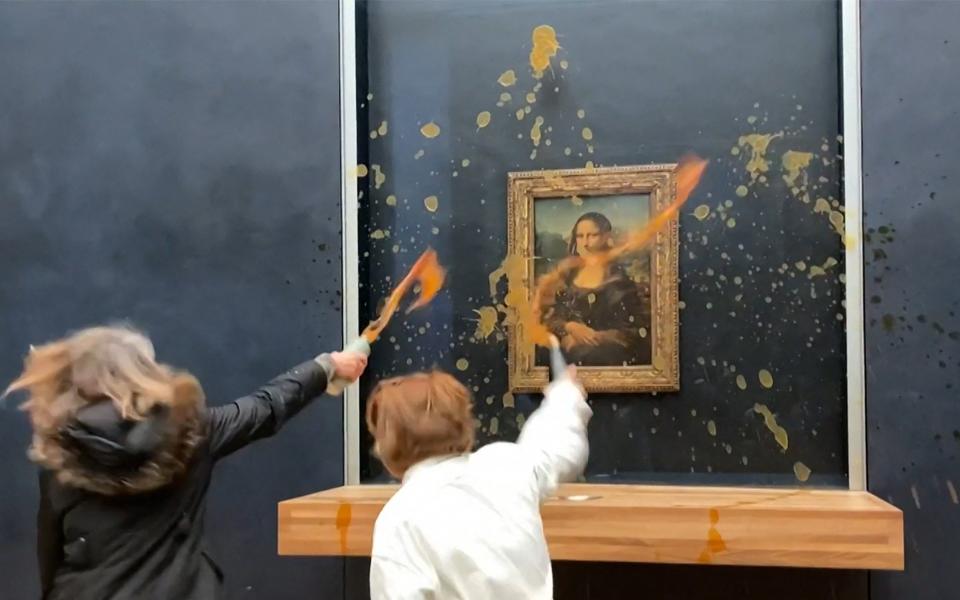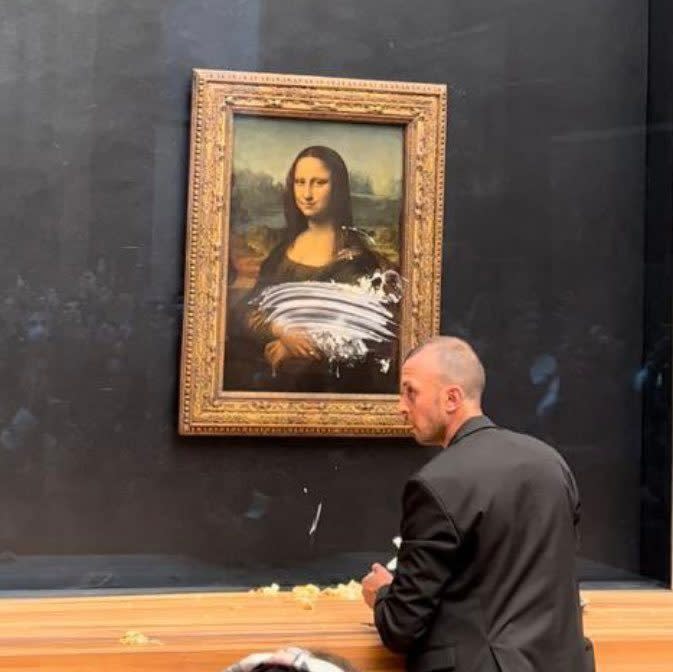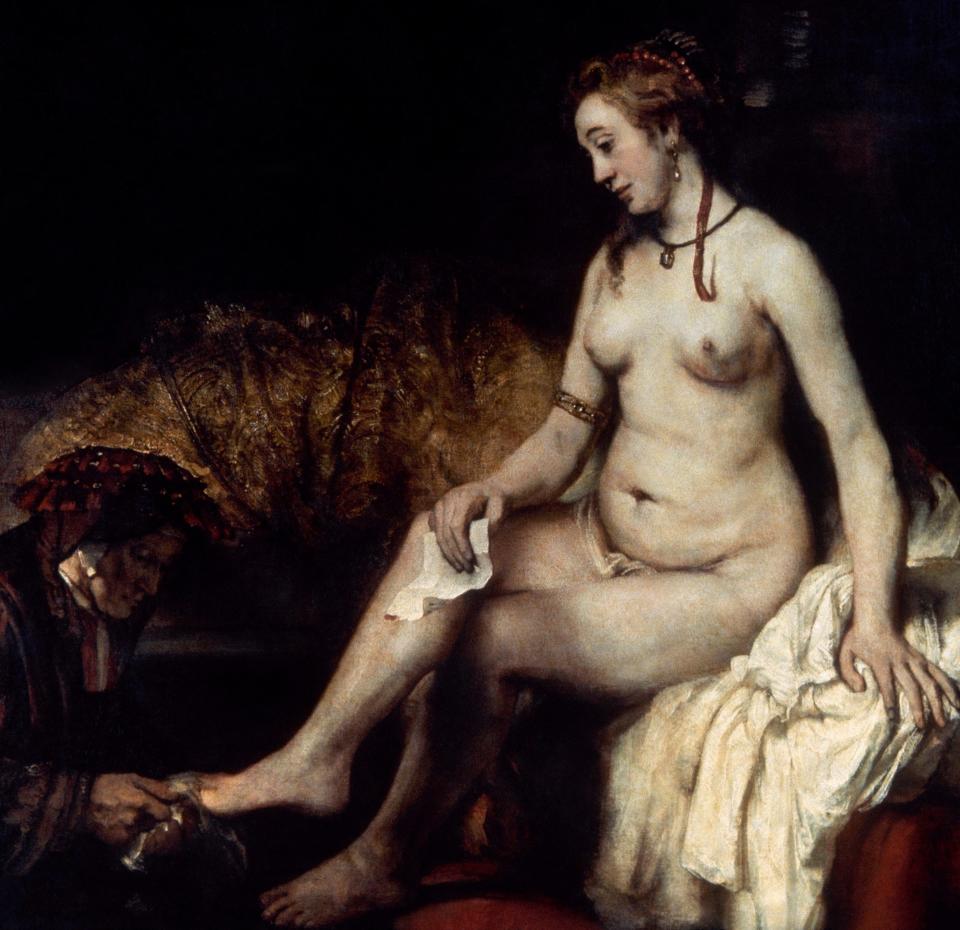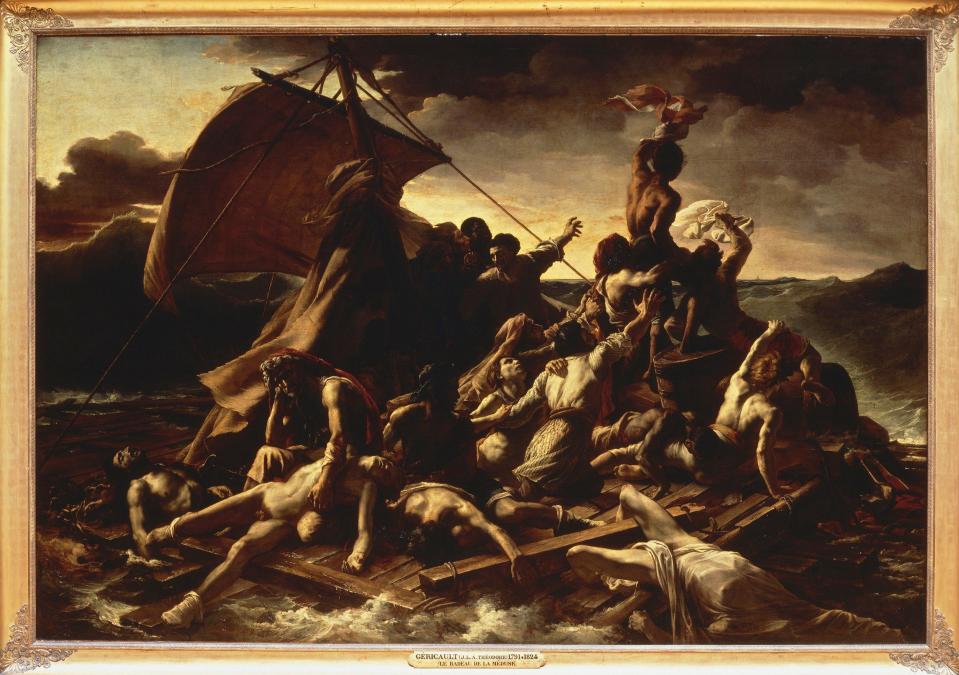On Sunday it was pumpkin soup. Two years ago someone threw a pie. In the 1950s it was doused with acid. But the Mona Lisa’s smile has never wavered. She has become accustomed to the global publicity that such attacks seem guaranteed to attract, and I will not encourage this further by citing the causes advocated by the perpetrators.
We all know why she is victimized this way. It is her extraordinary fame that is reinforced by the bizarre form of admiration she suffers from the millions of people who swim into the Louvre every day. No other exhibition in any museum attracts so much attention. Over the past decade, more than 100 million people have signed up for the Salle des Etats, the gallery where she hangs behind bulletproof (and soup-proof) glass, protected by balustrades and marshals overseeing the queues. Here the devotees have a few seconds head start La Gioconda (as the Italians call her). There is never less than a jostling as visitors queue and stretch to get this briefest view.


From a purely artistic point of view, the phenomenon is difficult to explain. Certainly, Leonardo da Vinci’s portrait is an intriguing work, executed by one of history’s greatest artists at the height of his powers. But while her smile is seductive and mysterious – and one of the first to be depicted in Western art – there are many other portraits of equal or greater visual power and historical importance. We are not even sure who the sitter was, although many art historians accept that she was the wife of Francesco del Giocondo, a wealthy Florentine merchant. In conjuring up that smile, Leonardo was probably joking about her name, which means “the cheerful lady” in Italian.
Intriguingly, Leonardo never delivered the painting to the Giocondo family. He carried it on a donkey across the Alps when he moved to France in 1516 and kept it until his death three years later. Why? Maybe he never got paid for it. He may have made two versions. Perhaps he didn’t finish it completely or was left unsatisfied in some way (he was a notorious procrastinator and perfectionist). Or did he enjoy it too much to let it go? Probably the latter. The painting was certainly admired by his contemporaries – including Raphael – and his assistants, who copied it. But because the secret was kept in the French royal collection, it took almost three hundred years before the public had a chance to make its judgment known.


It was first exhibited in 1797 when the Louvre became a public museum and (apart from a stay in Napoleon’s bedroom and the three years during which it was stolen) it has been on display ever since. Over the course of the 19th century, writers and critics became increasingly intrigued by the painting – so much so that the great art historian Bernard Berenson felt it had “just become an incubus” and when it was stolen he was “glad to have her washing up. ”. Ironically, that theft – in 1911 – cemented her fame. Intrigued Parisians lined up to see the hole in the wall. And they lined up again when the Mona Lisa was finally retrieved from Italy and put back into service in 1914. And the lines continue, perpetuating an extraordinary celebrity that no other painting has had to endure.
And so a mystery remains for visitors to Paris. If you’ve never seen the painting, should you wait in line for 30 seconds, check it off your list, and contribute to the problem at the same time? Or should you ignore it and focus on other works in the museum? It’s your decision, but either way, it looks like La Gioconda will have the last laugh.
Five less celebrated highlights from the Louvre
Portrait of a Lady (La Belle Ferronnière) (1490), Leonardo da Vinci
In addition to the Mona Lisa, the Louvre has four other paintings by Leonardo. This portrait, which hangs in the large gallery outside the Salle des États, is perhaps even more convincing. The identity of the sitter is not known for certain, but is probably the wife or mistress of Leonardo’s powerful patron, Ludovico Sforza, the Duke of Milan.


Place: Denon, Level 2, Room 710 (Grande Galerie)
Bathsheba in her bath (1654), Rembrandt
Rembrandt’s largest nude, almost certainly posed by his new lover, Hendrickje Stoffels. He portrays her as Bathsheba, not as the innocent bather spied on by King David in the Bible. Instead, he makes her read the letter David sent, asking her to betray her husband. So in addition to presenting her as a desirable nude, he invites us to consider what she might be thinking as she contemplates her fate.


Place: Richelieu, room 844
Portrait of Madame Molé-Reymond (1786), Elisabeth Vigiée Le Brun
In the years before the French Revolution, Vigiée Le Brun was Marie Antoinette’s favorite painter. She had a brilliant eye for evoking the kind of elegant spontaneity that was so attractive to the queen and her – mostly female – entourage. The charming, flirty smile in this portrait is of Madame Molé-Reymond, an actress at the Comedie-Italienne – a popular comedy theater and opera company of that time.
Place: Sully, floor 2, room 933
Portrait of a Black Woman (Madeleine) (1800), Marie-Guillemine Benoist
Madeleine was probably born a slave in one of the French colonies, but she is said to have been freed in 1794 when France first abolished slavery (it was reinstated by Napoleon in 1802). The painting was made when Madeleine was a servant for the artist’s brother-in-law. Benoist’s contrast of her black skin with her white robes, combined with the calmness of the sitter’s gaze, gives the painting a remarkable presence. But although she is formally posed and dressed, her exposed torso was highly unusual in such a portrait.


Place: Sully, floor 2, room 935
The Raft of the Medusa (1818), Théodore Géricault
This epic painting launched Géricault’s career at the age of 27. It caused a sensation when it was exhibited in Paris, not only for its dramatic power, but also because it represented a recent public scandal: the wreck of the French naval frigate Meduse caused by the captain’s incompetence. About 150 survivors were set adrift on a raft. Only fifteen survived, partly due to cannibalism. Placing black men at both apexes of the composition was also likely an expression of Géricault’s abolitionist sympathies.


Place: Denon, Level 1, Room 700